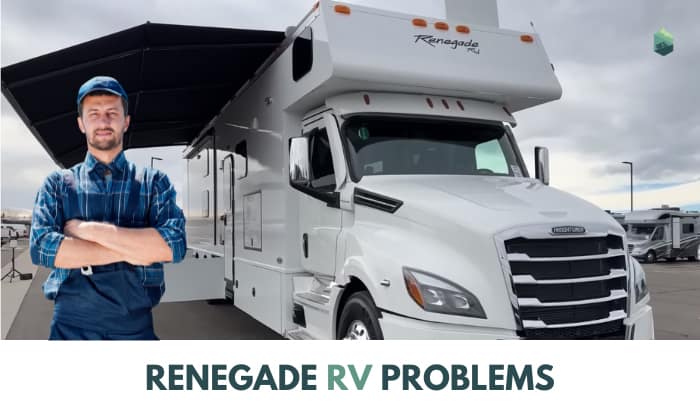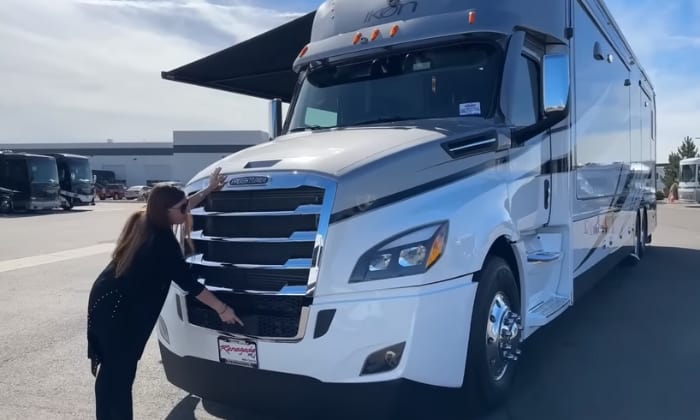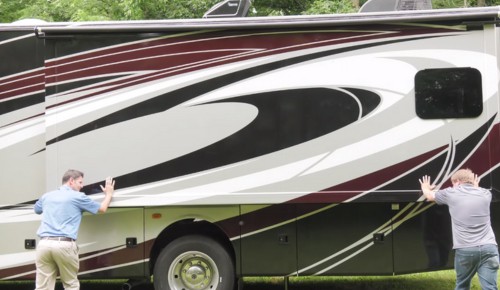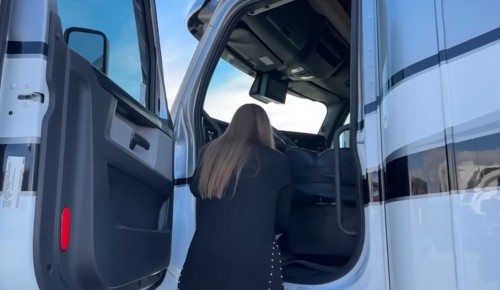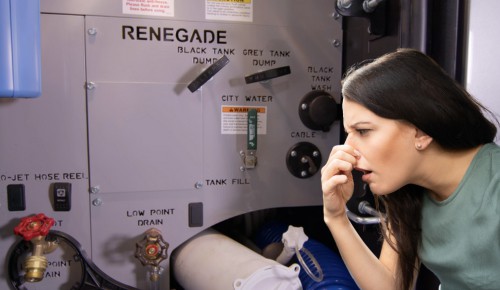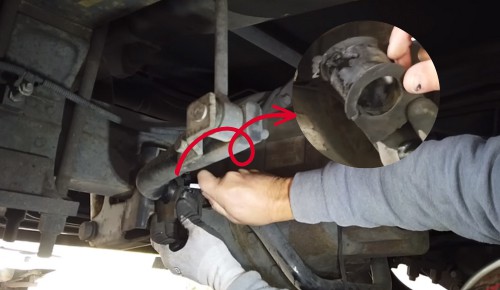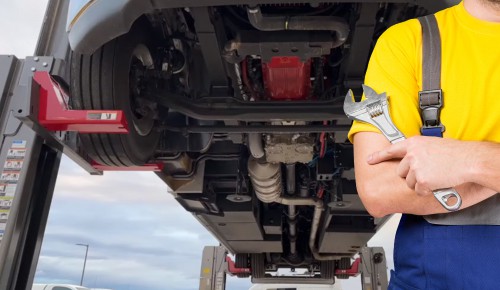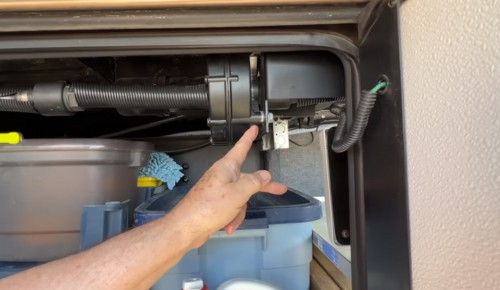Renegade RV problems are not exclusive to the brand. Issues with the slide-out mechanism, smelly sewage, chassis concerns, driver-side doors, and sway bar bushing problems can also occur in other RV brands.
So, why ditch an RV with premium build quality and unparalleled towing capacity loved by many for something less reliable? We recommend learning about these common issues and finding solutions to them.
And we have just the right article for you. Read on.
Page Contents
Common Renegade RV Issues and Solutions
Renegade RVs are not immune to mechanical failures and other automotive issues. However, some problems are more common on Renegades than on other RV brands. Let’s look at them.
1. The slide-out feature doesn’t work (or seldom works efficiently)
It’s easy to imagine why many Renegade RV owners find this issue bothersome. Slideouts are room extenders, allowing RV families to increase their living space and make RVing more comfortable and enjoyable.
Some Renegade owners say the slideout doesn’t open or gets stuck as it extends outward. Sometimes, the mechanism also doesn’t close, leaving the RV with a “room” jutting out of its side.
he most common culprits why the slideout doesn’t work as expected are:
- A jammed slide
- Slideout motor malfunction or damage
- Insufficient power to the slideout motor
- and a blown fuse
How to fix it
- Make sure to clean the slide to remove any dust built up in there, then apply some silicone lubricant.
- You should then check if the fuse and slide-out motor are still working and have the mechanics replaced if necessary.
- Also, insufficient power to the RV renegade might be because there is a problem with the cord. Remember to check it under the control panel and replace it if needed.
2. The door on the driver’s side loosens after about some months
Some Renegade RV owners experience this problem after only two months.
Driving on bumpy, potholed, and uneven roads can loosen the door’s link to the frame, causing misalignment.
Exposure to extreme heat can also “bake” the rubber edging, making them lose their integrity.
The same issue happens with worn-out weatherstripping.
Hinges and pins can also become problematic over time. These concerns are not specific to Renegade RVs, however. Other brands are susceptible to such issues, too.
How to fix it
- Hire an automotive body works specialist to remove and realign the RV driver’s side door if you cannot do it yourself.
- Remove the weatherstripping or rubber edging if it’s cracked or shows other signs of deterioration. Replace it with a new one.
- Replace damaged, stripped, or worn-out bushings and pins.
- Your last option is to replace the Renegade RV door with a new one. This solution might cost you at least $300. You can also expect an extra $150 to $200 for the hourly labor cost.
3. Smell emanating from the black tank
Nothing could be more unpleasant than “doing your thing” in the RV toilet, but an offensive smell makes defecating unbearable. “Stinky issues” arise with septic system breakdown.
A damaged or clogged toilet drain pipe (leading to the black tank) can cause the nasty smell to permeate throughout the Renegade RV. An empty black tank can also produce such a problem because of compacted and concentrated decaying organic matter.
How to fix it:
- Replace the hose pipe if broken or leaking. Alternatively, you can call a plumber to fix the problem.
- Remove tissue, hairs, and other debris using a drain snake.
- Clean the RV toilet and pipes periodically.
- Fill the black tank with water at about 1/3 its capacity every time you empty it.
- Consider a plumber if the smelly problem persists. Note that the hourly rate for such services ranges from $45 to $200.
4. Issues with the sway bar bushing
Mechanics call sway bars “stabilizers,” “anti-roll,” or “roll bars.” These components are integral components of large vehicles’ suspension systems.
Trucks, buses, and RVs are susceptible to “rolling” effects because they are narrower and taller than conventional cars. These vehicles also have a high center of gravity, making them top-heavy. They’re like a sailboat heeling from the wind.
The sway bar prevents or minimizes the RV’s “rolling” or “swaying” tendencies. Unfortunately, the stabilizer bar’s bushing (a friction-reducing component) can deteriorate over time.
Most sway bar bushings are rubber, which can last about a decade. Meanwhile, polyurethane bushings last slightly longer.
How to fix it:
- Replace the bushings if the Renegade RV feels sluggish when turning the steering wheel.
- Replace the sway bar if the Renegade RV becomes more difficult to control.
- Hire a professional to replace the bushing or sway bar, noting that they can charge you $80 to $120 an hour for their expertise.
Besides sway bar bushing deterioration, other chassis-related issues can plague a Renegade RV. However, it’s worth noting these concerns aren’t exclusive to the RV brand.
RVs have a skeleton (the chassis) supporting the vehicle’s “home,” where you drive, eat, sleep, have fun, and live on the road. The chassis is the framework for the automobile, allowing different parts to function seamlessly.
The chassis battery (or starter battery) might be dead or have a low charge, preventing it from starting the Renegade RV’s engine. It’s like our cars that have batteries with a limited lifespan.
The Renegade RV’s air dump valve can also malfunction or deteriorate, leading to issues in the vehicle’s leveling capabilities.
How to fix it:
- Check the chassis battery’s charge level and recharge it per the manufacturer’s instructions.
- Consider replacing the battery with a maintenance-free version, preferably with a higher Cold Cranking Amps rating (especially if you live in colder regions).
- Check the suspension air dump valve for proper function and integrity. Replace it if necessary.
- Assess chassis joints and replace worn-out or damaged bushings, bolts, screws, washers, and other hardware.
- You can hire a professional to fix Renegade RV chassis-related problems for an all-in package (including parts) of at least $550.
6. Loose motor assembly fasteners
Some people use “motor” and “engine” interchangeably. However, it’s worth noting that engines require fuel for combustion, while motors need electricity. Hence, Renegade RV owners must learn to distinguish these terms.
Although engine breakdown and motor failure are unheard of in Renegade RVs, the hardware (i.e., screws and bolts) securing the motor to its mounting plate can loosen over time.
Hardware loosening can be due to improper tightening procedures (i.e., not using the correct torque). A radiator fan not spinning smoothly in its axis can also loosen bolts. So do excessively high temperatures (producing thermal expansion) and unnecessary shaking and vibrations.
How to fix it:
- Remove all fasteners and re-tighten them using the manufacturer’s torque specifications. Your owner’s manual contains data for torque settings (including hand tools) for tightening fasteners.
- Replace damaged or worn-out fasteners (i.e., bolts and screws).
- An RV mechanic can tighten or replace these pieces of hardware for an hourly price of $50 to $200.
Conclusion
Other RV brands can experience the same Renegade RV problems. After all, these issues are mostly mechanical (they’re subject to wear and tear). And if that means anything, all automobiles, large and small, can have these concerns.
Renegade RVs are some of the best on the road. And it would be a shame if you ditch a reliable motorhome only because it has some problems we can also find in other vehicles.
Observing periodic maintenance and proper driving techniques should help minimize these RV problems
Let’s dig into the problems you can encounter with other RV brands:

My career journey has been marked by a variety of roles. I served as a Personal Trainer for Children, Fitness Instructor, and Home-Based Consultant in Detroit Wayne Integrated Health Network.
More than ten years of traveling in my caravan have lent me a deep appreciation of freedom. Without the shackles of being tied down to one place, I get to explore many parts of the world and relish the exhilaration that comes with discovering new things. Throughout my journey, I have been a member of FMCA (Family Motor Coach Association) since 2020. Thus, living on the road has never become boring for me.
As someone with a burning passion for traveling, I want to inspire others to adopt a nomad lifestyle to appreciate the beauty of the world. This, of course, requires a functioning vehicle that can always make you feel at home, even when you’re far away from modern life.
Therefore, I seek to put my experience to good use—helping you with your adventure on the road. As a result, I launched and managed the Outdoorbits website, where I likely share my enthusiasm for outdoor activities and health-related insights.
